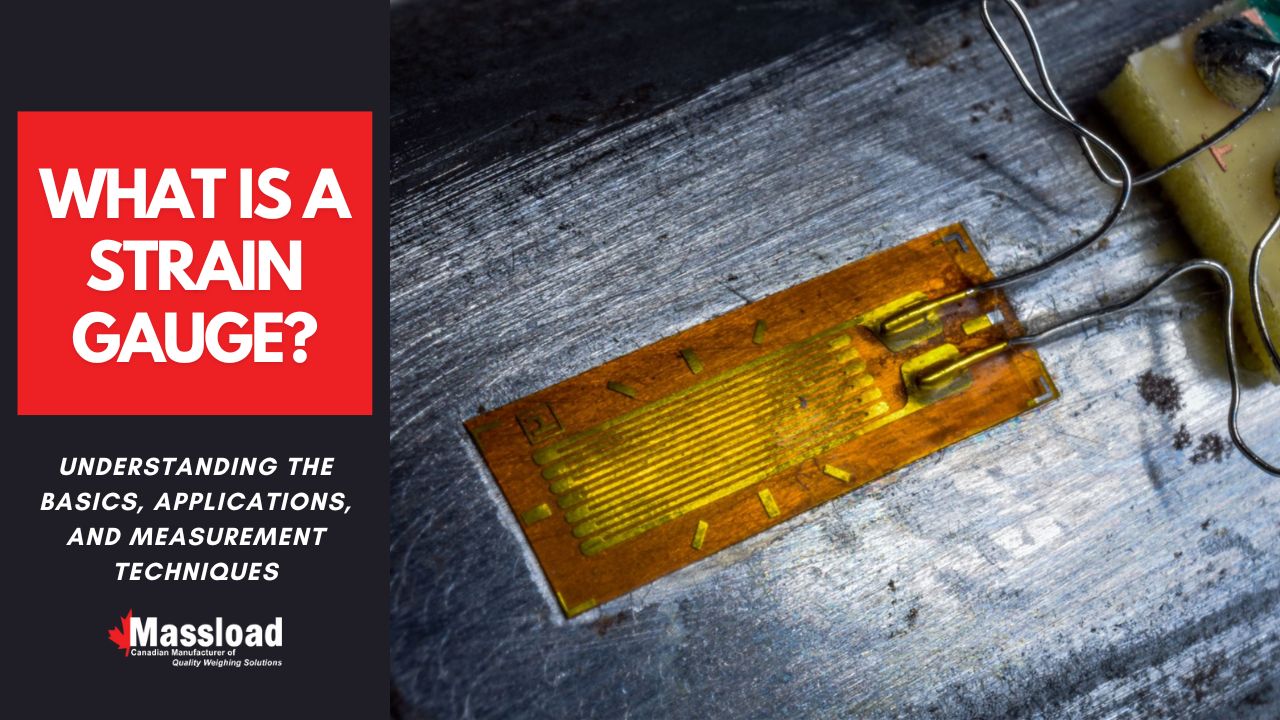
Understanding the Basics, Applications, and Measurement Techniques
In the world of engineering and materials science, understanding how materials behave under stress is key. That’s where strain gauges come in. A strain gauge is a device to measure strain on an object.
By converting physical deformation into a change in electrical resistance, strain gauges give you precise stress and strain measurements, they are used in many applications from structural monitoring to aerospace. Let’s get into how they work and where they are used.
How Does a Strain Gauge Work?
Strain gauges work based on the principle that electrical resistance changes with deformation. A typical strain gauge is a fine wire or metallic foil in a grid pattern. When bonded to an object, any deformation (tensile or compressive) changes the gauge’s length and cross-sectional area and thus its resistance. This change is measured using a Wheatstone bridge circuit and converted into a readable output.
The Wheatstone Bridge Circuit
The Wheatstone bridge is the heart of strain gauge measurement, usually involving 4 strain gauges. The bridge consists of two halves or circuit legs (e.g. the left side and the right side), each with two strain gauges in series.
In practice one gauge in each leg is placed in a compressive stress area and the other gauge is placed in a tensile stress area. These forces are simultaneous due to the mechanical design of the structure, so one gauge increases in resistance and the other decreases. This setup makes the voltage at the junction of the two strain gauges go up or down with respect to the ends of the circuit.
In the second circuit leg, the gauges are placed in opposite stress locations compared to the first leg. So the voltage at the junction of the two strain gauges in this leg moves in the opposite direction of the first leg. The net result is a voltage difference between the two centers of the circuit legs which is proportional to the strain. This small voltage difference is then amplified for more accurate strain measurements.
Types
- Bonded Foil Strain Gauges: The most popular type, these have a thin metallic foil pattern bonded to the test surface. They are used most often due to their reliability and ease of use.
- Semiconductor Strain Gauges: More sensitive but temperature sensitive. Used in high-precision applications.
- Unbonded Strain Gauges: Used in load cells, these have a wire stretched between two points that reacts to applied force. Less common but useful in specific transducer applications.
- Optical Fiber Strain Gauges: Use light to measure strain, immune to electromagnetic interference and harsh environments, high accuracy in tough conditions.
Applications
Load Cells and Transducers
Load cells are used in many industries and applications to measure force and weight with precision and reliability. They are a critical part of weighing systems, such as industrial scales and balances, food processing, and logistics.
In construction, load cells monitor the weight and stability of structures, safety, and compliance with reliability. In research and development, load cells are used in experiments that require precise force measurements, such as material testing and biomechanics. Strain gauges in load cells make them a must-have tool in these fields.
Structural Monitoring
Strain gauges are used in civil engineering to monitor the health of structures like bridges, buildings, and dams. By measuring the strain and stress in these structures, engineers can detect failures early and take preventive measures. This ensures the life and safety of critical infrastructure.
Aerospace
In aerospace, strain gauges test and monitor aircraft components under various stress conditions. This ensures parts can withstand operational stress, and improve safety and performance. Used in testing wings, fuselage, and other critical components during development and maintenance.
Automotive
In automotive, strain gauges measure stress and strain on various vehicle components, from chassis to suspension systems. This helps design safer and more efficient vehicles. Used in crash testing, durability testing, and real-time monitoring of vehicle dynamics.
Industrial Machinery
Industrial machinery uses strain gauges for condition monitoring. They measure strain in critical components so maintenance can be scheduled proactively, reduce downtime, and prevent failures. This improves operational efficiency and reduces the risk of unexpected breakdowns.
Medical Devices
In medical devices, strain gauges are used in prosthetics and other adaptive equipment to measure and adjust in real-time, to better patient outcomes. Prosthetics work correctly and provide the right support and flexibility.
How to Measure Strain with a Strain Gauge
Attach the strain gauge to the test material. As the material deforms the strain gauge deforms and its resistance changes. The Wheatstone bridge circuit detects this change and produces a voltage difference which is amplified and converted into a readable strain value. With strain sensors, you can measure strain on the object itself.
Factors Influencing Strain Gauge Measurements
- Temperature: Strain gauges are temperature sensitive and temperature can affect their accuracy. Compensation techniques and temperature-stable materials are used to mitigate this. Proper calibration and using materials with low thermal expansion coefficients is key.
- Gauge Length and Pattern: The length and pattern of the strain gauge determine its sensitivity and measurement area. Longer gauges average strain over a larger area, while shorter gauges measure locally. The pattern also affects how strain is distributed across the gauge.
- Adhesives and Installation: Proper bonding of the strain gauge to the test material is key to accurate measurements. Special adhesives and careful installation techniques are required to ensure reliability. The choice of adhesive depends on the material and environment.
Advantages and Disadvantages of Strain Gauges
Advantages:
- High accuracy and sensitivity.
- Wide range of applications across industries.
- Can measure very small strains.
- Durable and reliable in various environments.
Disadvantages:
- Susceptible to temperature changes.
- Sensitive to environmental factors such as humidity and electromagnetic interference.
- Requires careful installation to get accurate results.
- Limited lifespan if not protected in harsh conditions.
Advanced Considerations and Custom Applications
Custom Strain Gauges
For specific applications, custom strain gauges can be made to meet your requirements, such as custom shapes, materials, and sensitivity. This ensures optimal performance for your unique measurement challenges.
Temperature Compensation
To compensate for temperature changes, strain gauges often have temperature compensation built in, so you get accurate measurements even in changing conditions. These compensate for the resistance changes caused by temperature.
Conclusion
Strain gauges are a must-have for measuring strain and stress in materials and structures. They convert physical deformation into electrical resistance and are used in industries from aerospace to medical devices. Among many applications, strain gauges in load cells are the most popular. These sensors give you precise force and weight measurements, so they are essential in industrial scales, construction monitoring and many research applications.
Understanding how strain gauges work, their types, applications, and measurement techniques allows engineers and scientists to effectively use these sensors to ensure the safety, reliability, and efficiency of various systems and structures.
By incorporating strain gauges into monitoring and testing, industries can get more precise measurements and better designs, more safety, and better performance. With advancements in materials and technology, strain gauges get even better and more accurate for critical applications.


